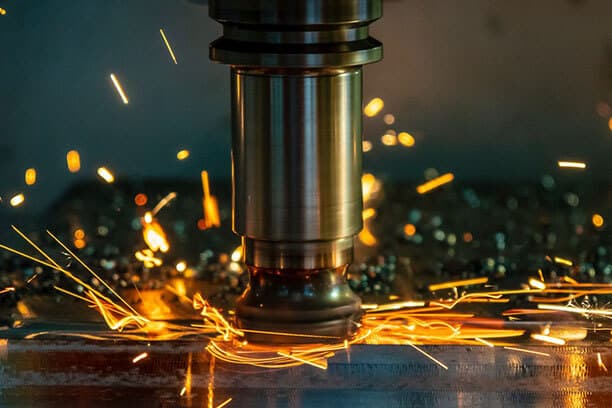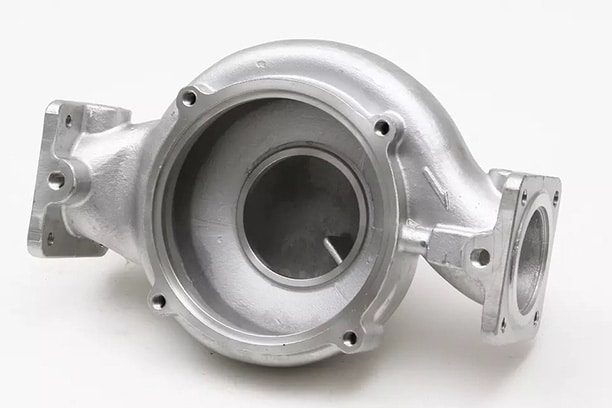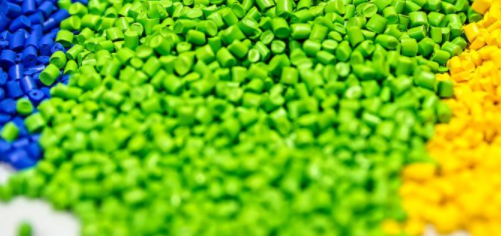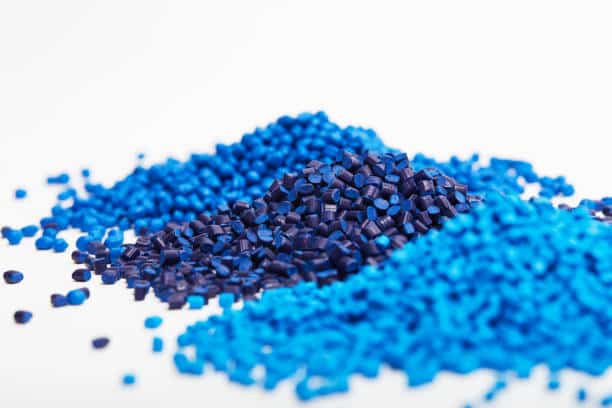Manufacturing durable goods involves the use of tools, dies, and molds. The process of tool and die manufacturing entails cutting and shaping metal, as well as other materials, using tools, and employing metal forms called dies to stamp, forge, or mold various substances into specific shapes. This process also encompasses the creation of metal molds for shaping plastics in injection molding, as well as molds for ceramics and other materials.
This blog serves as a basic guide to the tool and die manufacturing process, with a focus on the definition of this type of manufacturing, the processes involved, the difference between tools and dies, and details about dies. Read on to learn more.
What Is Tool and Die Manufacturing?
Tool and die manufacturing is a machining method used to create a variety of implements that are important in various manufacturing processes. The term “tool” refers to instruments utilized in fabricating other parts, while “die” creates intricate shaped objects in the same way as a mold. The tool and die manufacturing process is crucial in applications such as fasteners, tool bits, automotive components, and others.
The fundamental elements of tool and die manufacturing consist of:
- Precise cutting and shaping tools for metals and other materials.
- Dies that are used to shape metals through forging or stamping, such as for plastic, ceramic, or composite materials.
- Jigs that securely hold the metal during boring, drilling, or stamping processes.
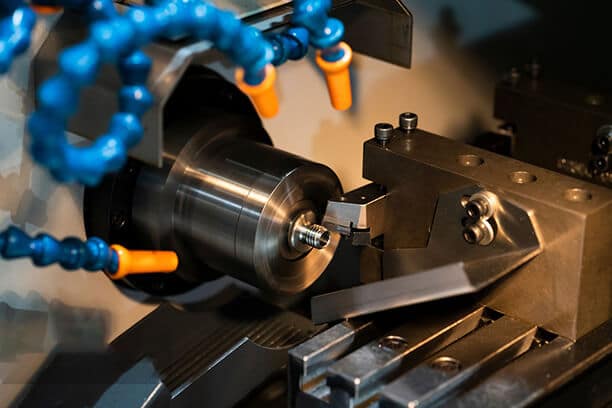
Tool and Die Manufacturing Process
Tool and die making involves creating production tools such as jigs and fixtures, stamping dies, and plastics molds for use in mass manufacturing.
The majority of work in tool and die shops involves creating pressworking dies. These dies are used in making sheet metal parts that vary in size from small telephone parts to large automobile body panels. Each pressworking die is made up of two sections known as punch and die, or male and female, mounted in an electrically or hydraulically powered press. During a working cycle, the male section descends into the fixed female section, cutting or shaping any metal in between the sections. The size of both the dies and presses range from small bench presses to enormous machines capable of exerting massive amounts of force. For example, the press that stamps the roof of a car is often three stories high and can exert tons of force.
The process of plastic molding shares many similarities with stamping dies, except for the fact that stamping requires force whereas molding does not. Two units are needed in plastic molding that form a closed system of cavities connected to a central opening. The liquid plastic is pushed through the orifice and into the molds, and once it hardens, the molds open up, and the finished product is removed.
Learn more about our Precision Tool & Die Manufacturing Services
Tools and Dies: Their Difference
To differentiate between a tool and a die, one can consider that dies are a type or category of tools, therefore, all dies can be classified as tools, yet not all tools are considered dies. Tools in metal stamping can include anything that shapes, molds, or supports metals. In this way, jigs and fixtures can be divided to tools. Dies, however, only serve the purpose of changing the shape of the metal and are generally female components that are part of larger tools or presses.
A die is a machine tool with a specific focus primarily used in manufacturing industries to cut or form materials according to a desired shape or profile. Like molds, dies are customized for their intended use in manufacturing processes. Dies are used to create a broad range of products, from simple office supplies like paper clips to complex pieces required in the aerospace industry. Conversely, tooling or machine tooling refers to the process of acquiring specialized machines and components required for full-scale manufacturing.
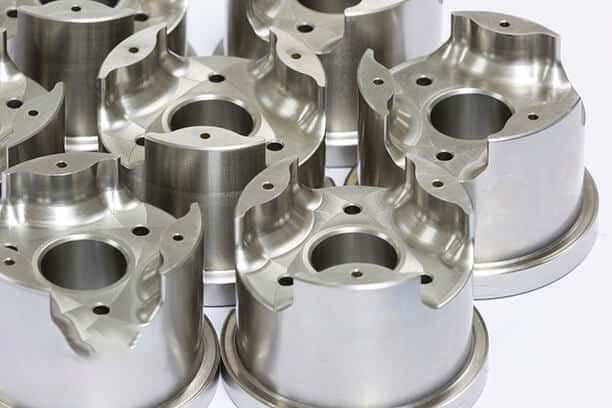
What Is Tool Making?
The process of tool making typically involves making instruments that aid in the production of goods. These tools can range from fixtures and cutting tools to machine tools and metal forming rolls that are used to hold, test, or produce products during manufacturing. Due to the unique requirements of the job, a tool maker may have to create customized tools or enhance existing ones.
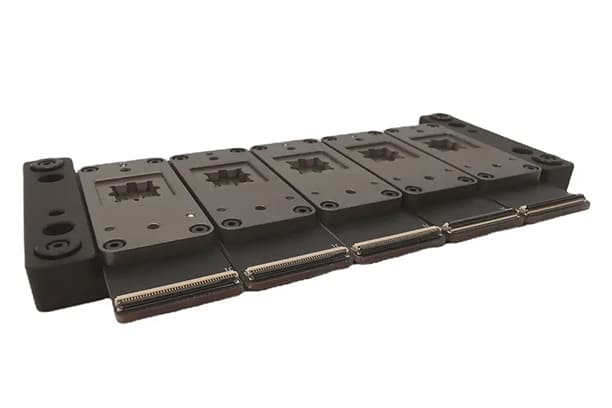
What Is Die Making?
The process of die making is a specialized field within tool making that focuses on the production and upkeep of dies. A variety of dies, including die sets, punches, and steel rule dies, are typically created through this process. Precision and accuracy are crucial, as the die steels and punches must maintain strict clearance levels to ensure accurate component creation. Additionally, the machining of parts often requires extremely small tolerances of less than 1/1000 of an inch.
When a die and a press work together, they can shape and resize materials to create objects. The press exerts pressure on the material inside the die, resulting in an item that matches the die’s specific shape and size. These dies are typically created for particular purposes and can employ metals, plastics, or composite materials as their base. Once a die has been formed, it can only create objects that match its shape and size, and manufacturers must determine if the investment is worthwhile before creating one. As a result, tool and die manufacturing is often reserved for high-volume production.
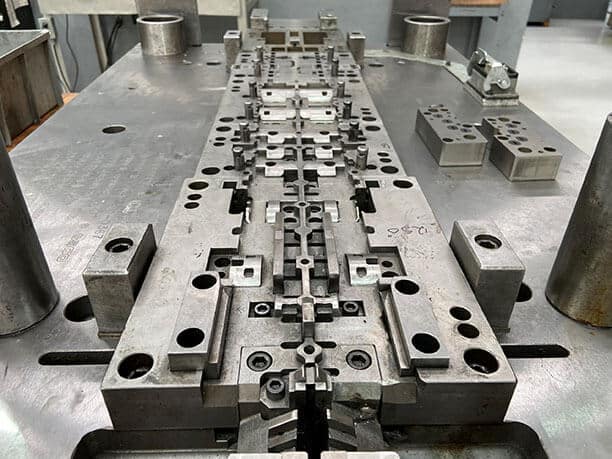
Parts of A Die
Although there may be variations across die blocks, especially between those for cutting or forming the workpiece (or both), the majority of dies share a standard set of parts.
- Punch – The punch is the male part of the die that applies force to the workpiece, resulting in a change in shape.
- Punch plate – The punch plate connects the punching feature to the ram, allowing it to move.
- Stripper plate – The stripper plate is used to separate the workpiece from the punch after each hit.
- Pressure plates or backup plates – To evenly distribute the high pressure applied by the punch, different pressure plates are placed inside the die.
- Die block – The die block is similar to a mold and is designed with holes and indentations to create the desired shape of the component. It is pressed into by a punch or press to achieve the shape, and is usually female.
- Die holder – A die holder is used to support the die block and is attached to the upper or lower die shoe. It is supported by a bolster plate.
- Guide pins – Guide pins are critical for aligning the upper and lower parts of a die accurately.
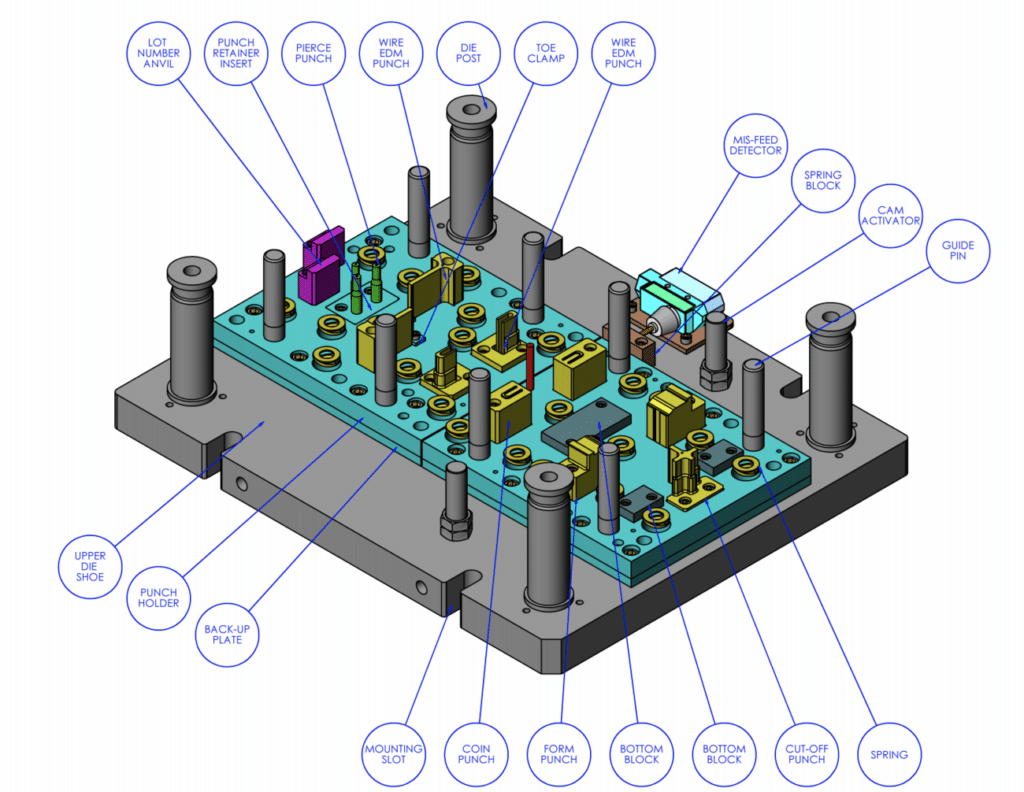
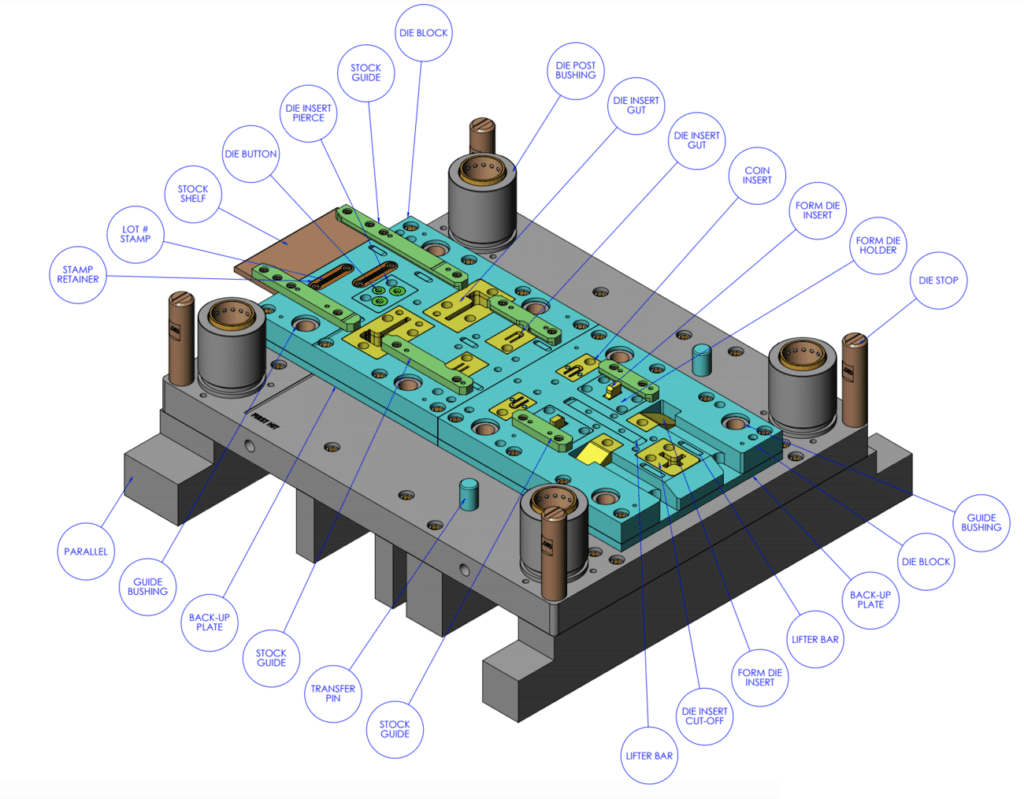
Types of Die
There are various terms used to categorize dies, ranging from general to specific. At the highest level, dies can be classified as either cutting or forming. A cutting die is any die that removes, cuts, or shears material, regardless of its mechanism, whereas forming die does not remove any material.
However, this classification is not entirely comprehensive since some dies perform both cutting and forming functions. Moreover, certain dies like coining dies have their own specific categorization based on the process.
Another useful way to categorize dies is by analyzing what transpires with each stroke of the press during the tooling process:
1. Simple Dies
As its name implies, simple dies only have the capability to execute one type of cut or shape with each movement. Although this type of tools may have an advantage in terms of affordability, it is not as effective for more complex designs requiring several forming actions.
2. Compound Dies
Compound dies have been created to perform several cutting and shaping processes in a single hit. Though this can reduce the speed of the stroke, they are more effective in the course of the tool manufacturing process and decrease the possibility of mistakes when transferring the workpiece between various stations. Moreover, compound dies are ordinarily cost saving than progressive dies.
3. Progressive Dies
Progressive dies provide a highly effective means of carrying out numerous operations on a single piece of metal. Unlike simultaneous processing, these modifications are conducted at distinct stations as the feeding mechanism continuously advances the material into the die.
As such, each stroke generates several cutting and shaping actions, even applied to different parts of the raw material, which become their own refined pieces. The ultimate site of the operation extracts one such component from the lengthier workpiece, implying that each stroke manufactures one or more parts while others are still in development.
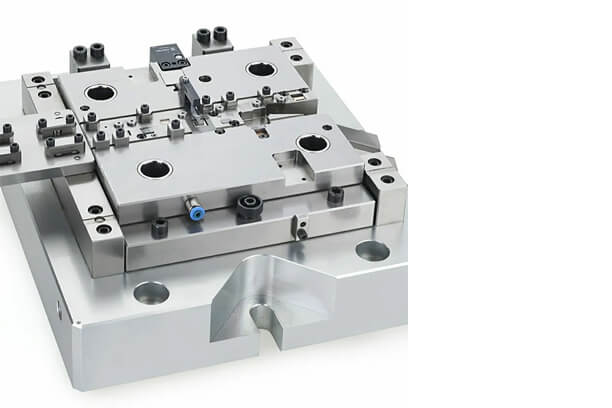
4. Transfer Dies
Transfer dies are similar to progressive dies in structure, but they differ in that they use pre-cut blanks that need to be mechanically transferred between stations instead of utilizing a single strip of metal. Transfer fingers or conveyor belts often play a role in facilitating the transfer process. The use of transfer dies significantly enhances efficiency, particularly when cutting larger or more intricate parts that are not compatible with progressive die cutting.
5. Multiple Dies
The multiple die press or gang press is notable for producing multiple components in a single stroke. To achieve this, multiple identical dies are connected to a single control mechanism, allowing them to operate in unison.
Male and Female Dies: Their Difference
It’s useful to clarify the definitions of male and female dies since they can vary greatly. As in electronics, the protruding component is usually the male component while the female component is characterized by a depression or an indentation.
- When it comes to metal stamping, the male punch is utilized to cut or shape the workpiece by driving it into the die block. As mentioned earlier, sometimes both cutting and shaping are performed by the male punch.
- The female component complements the male punch and is responsible for defining the shape of the component. In addition to creating the indentations in the die block where the workpiece is pressed, the female portion can also include holes to make it easier to remove metal that has been cut or drilled.
In processes that require more than a simple die, the male portion will usually consist of multiple steel cutting or forming punches. In turn, the female portion will match the pattern of the male punches.
Die Manufacturing and Molding: Their Difference
There is a common misconception that molds and dies are the same. While both techniques involve altering the size and shape of raw materials and utilizing a cavity to form them, they are distinct processes. Molds employ liquid or viscous raw materials that are poured into pre-shaped, three-dimensional, hollowed-out templates and left to solidify into components or product. Dies, on the other hand, also rely on pre-made, three-dimensional templates but stamp out the raw material in a solid rather than a liquid state.
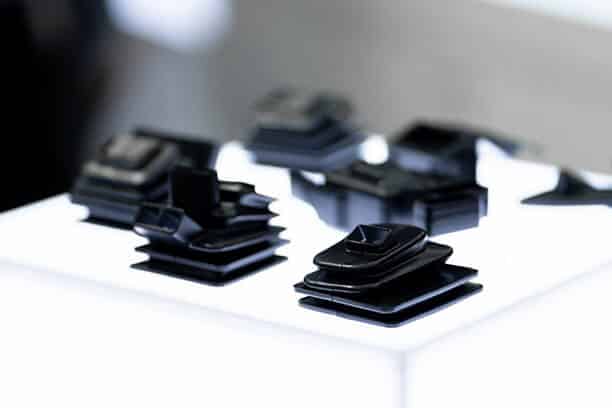
Learn more about our Custom Die Casting Services
Conclusion
The use of tools and dies is crucial in the manufacturing process to ensure the production of long-lasting goods. Tool and die making is particularly beneficial for businesses involved in high-volume production as it can result in significant cost savings. The importance of tools, dies, and machinists is apparent in a wide range of industries, so we hope this article will help you have a better understanding of this type of machining.
Custom Tool & Die Maker with CNC Machining|Runsom Precision
Runsom Precision, as a seasoned tool and die manufacturer, is equipped to assist you in designing and building tools and dies for the creation of exceptional products. Our highly skilled and seasoned tool and die, makers, along with our machinists, are proficient in utilizing CNC machining and wire EDM techniques to offer you a wide range of services, such as die repair, die component replacement, fixtures and gauges, and manufactured assemblies.
At our cutting-edge facility, we persistently reinvest in the newest equipment and software to enhance our prototyping capabilities, ensuring the optimization of die manufacturing during the planning process. Consequently, our clients benefit from the most cost-effective pricing per component, unmatched quality, and on time delivery.
In addition, we offer one-stop CNC machining services, including CNC milling, CNC turning, 5-axis CNC machining, Swiss CNC machining, and more. Request a rapid quote today!
Other Articles You May be Interested in:

